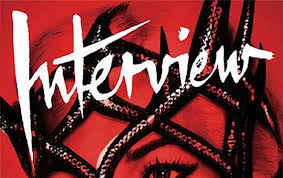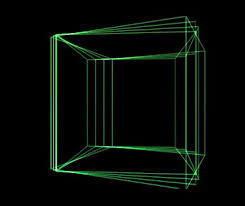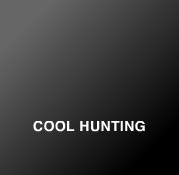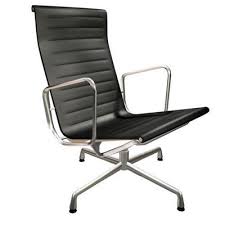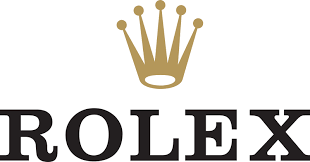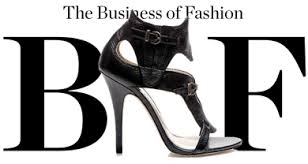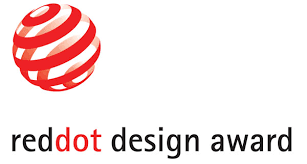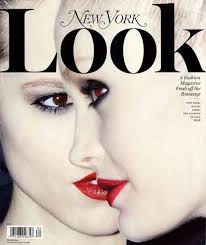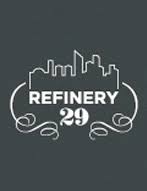 Bloom__V Magazine Issue 28
Bloom__V Magazine Issue 28 Harper's Bazaar
Harper's Bazaar
 Effleureé__Numero__2007
Effleureé__Numero__2007
 Sun and Skies__Harper's Bazaar
Sun and Skies__Harper's Bazaar
 Levitation__Numero__2006
Levitation__Numero__2006

 Highlights from Milan__Harper's Bazaar__2007
Highlights from Milan__Harper's Bazaar__2007 Points a la Ligne__Numero__2008
Points a la Ligne__Numero__2008 Points a la Ligne__Numero__2008
Points a la Ligne__Numero__2008
 AnOther Magazine__2009
AnOther Magazine__2009 AnOther Magazine__2009
AnOther Magazine__2009 Knock Out Couture__Harper's Bazaar__2001
Knock Out Couture__Harper's Bazaar__2001 2006
2006 AnOther Magazine
AnOther Magazine Karen Elson
Karen Elson Victoria Beckham__Vogue Russia__2009
Victoria Beckham__Vogue Russia__2009 Kate Holmes__T Magazine__Dec.08
Kate Holmes__T Magazine__Dec.08[(artandcommerce.com) (flickr.com) (images.google.com) (models.com)]
Sølve Sundsbø is one of the great innovators in contemporary image-making. His capacity for visual experimentation has brought him enduring respect within the industry. His advertising clients include Giorgio Armani, Bally, Boucheron, Etro, Givenchy, Gucci jewellery, Hermès, H&M, Iceberg, Lancôme, Estée Lauder, Yves Saint Laurent, Levis, Nike, Sergio Rossi, Emanuel Ungaro and Puma. Sundsbø has also created editorials for Another Man, Dazed and Confused, Harper's Bazaar, i-D, Japanese Vogue, Numero, Pop, Visionaire, V and W. He has directed short films for Nike, Gucci and SHOWstudio.
Sølve Sundsbø was born and raised in Norway, and has lived in London since 1995. His photographs have been included in important fashion photography exhibitions including the Festival de Hyères and The Archaeology of Elegance.

When fashion photographer Sølve Sundsbø started his career, for a while it seemed as though he would get no further than the dole queue. "People would say to me, 'I'm not sure I can hire you, I'm not sure what you're doing. What is your style?' I was mortified and thought I was never going to make a living as a photographer."
The problem was that curiosity had got the better of the young Norwegian and he couldn't help but embrace every photographic technique going. His work incorporated everything from X-rays and 3-D scanning to hi-tech manipulation and laborious hand-painted retouching. "If I've got a style," says Sundsbo, "it's that I've got no style."
Undeterred, and still in his early twenties, Sundsbo hopped on a plane to London to set about seeking his fortune. And four months into a photography course at the London College of Printing he got a call from Nick Knight, who was looking for an assistant. For a young fashion photographer, there are few better places to start. Knight is not only regarded as one of the world's most visionary fashion photographers, but his Show Studio gallery continually pushes the boundaries of artistic possibilities. "It was hard – almost medieval in the way that you devote yourself utterly to your teacher for nearly four years. But you get that same devotion back from your teacher."
The hard work paid off and Sundsbo is now regarded as a fashion-world institution.
The designer Tom Ford cannot speak highly enough of him. "Solve is a great talent in the fashion industry," he says. "His photographs speak for themselves. They are powerful, beautiful, always fresh, and I am lucky to have worked with him over the past decade."
Sundsbo's portfolio reads like a who's who of luxury designers – Yves Saint Laurent, Dior, Gucci, Hermès, Bally and Armani. He has also branched out into short films, teaming up with Alexander McQueen to produce a piece for the Florence Biennale. "We set Eva Herzigova on fire," he says. "She was really floating on water but it looked as if she was going up in flames." He's also responsible for the covers of this month's Dazed & Confused and the current issue of Pop, featuring supermodel Stephanie Seymour.
Despite his versatility, it's easy to spot a Sundsbo image. His pictures look as if they've been digitally altered, when in fact often they haven't. "People assume my work has been through a computer but actually I also use a lot of old-fashioned techniques," he says. The concept is also more important to Sundsbo than the finish and he probably has more in common with a fine artist than slick fashion snapper. When he was asked to take a picture of Nitin Sawhney, for example, he made a plaster-cast model of the musician's head and took a picture of that instead. And when YSL hired him to shoot a fragrance campaign, he persuaded a former member of the French Olympic tae kwon do team to appear in advertising's first full-frontal male nude shoot. "We're raised to understand that women's bodies sell products," he says, "but when you apply the same notion to a male, people can't accept it. It was an interesting exercise in people's perceptions."
Sundsbo is now intent on railing against mediocrity in fashion imagery. "Photography has become democratic – anyone with a digital camera can shoot something and alter it in Photoshop to make it look polished. For the past four or five years there's been a lot of dull, perfected work around, but there's an industry backlash going on now."
To coincide with London Fashion Week, Sundsbo is launching his inaugural exhibition in London's Spring Studios, a former paint factory that is now a devoted fashion gallery. Sundsbo's work will be blown up and reproduced to the highest quality – a luxury that fashion magazines can't afford. One of his best-known pictures on show is of the British model Karen Elson, with the colours slightly altered to give the image a harder, otherworldly edge. Then there are shots of Canadian model Jessica Stam smiling through a tiny set of fangs, and designer Gareth Pugh in a knitted American football kit. "The great thing about being a photographer is that you can manipulate your own universe," concludes Sundsbo. "It would be wonderful if the world was inhabited by these creatures. I'd love it if any one of them walked out of the frame and into my world."
Saturated, by Solve Sundsbo, is at Spring Studios, London NW5, from 8 February to 20 March
London's Spring Projects Gallery
The Moment: What made you interested in this project to begin with?
Sundsbø: I’ve been trying to explain that to myself…(laughs). But I did this for two reasons. First of all I really like the people that are involved in this and I really love the space. Secondly, I’ve been growing increasingly curious about putting my work into the context of a gallery.
TM: I think that’s one of the confounding things about fashion photography is that as beautiful as the images can be, it’s difficult to translate into a gallery. Is that something you considered?
Sundsbø: Completely. We didn’t select the most commercial fashion photographs because it would have felt a bit out of context and a bit weak, so the editing process was really important. It was quite interesting going through a lot of pictures and trying to edit it down to something that feels coherent and belongs in a gallery. I think we’ve done that by selecting work that works in a context together. They’re all very iconic, studio based, slightly other-wordly images and funny enough, that other-worldliness wasn’t something that we looked for when we did the initial edit. It was more to try to find something that worked visually together.
TM: Do you consider these images fashion photographs or not?
Sundsbø: Well of course they’re fashion but even art is fashion in that way… pure art is fashion as well. Art and fashion have a love/love relationship and a love/hate relationship.

Sølve Sundsbø's resume is enough to make most photographers green with envy. When he’s not shooting short films for the likes of Nike and Gucci, he’s taking pictures of your favourite supermodels.
Having relocated to London 9 years ago, he has earned his fair share of accolades, including being voted Best Newcomer at the International Fashion Festival in Hyeres. Sundsbo’s work may also have entered your consciousness through his work on the album covers of chart topping groups such as Coldplay and Royksopp. On the eve of his show at the new Spring Studios in London – Solve’s exhibition will be the first at the studios, the 38 year old father of three talks stylish cities, ski photography and breaking into the industry.
Format: Who or what initially inspired you to take an interest in photography?
Sølve Sundsbø: What first inspired me – it sounds really silly – was some Swedish ski photographers who worked in the 80’s. It’s an unusual answer, but it’s an honest one. I was skiing a lot and there were some fantastic photographers that produced some really beautiful, poetic images. Photographers like Felix St. Clair-Renard and Mats Gustafson. That was when I was around 14-15. I got into photography through that, and then the path on from there was a bit more complicated. Then there was the classic photographers like [Harry] Callahan, but first it was the Swedish ski photographers that inspired me right from the start.
Format: When did you first realise you had a flair for it?
Sundsbø: My first day of working for a student newspaper, when my camera was completely ruined. My first day of work as their photographer and my old Nikon was ruined so I couldn’t actually see through it, but I had to wing it, so I used it that day and even when I looked at those portraits today, they still look really great. I thought – if I could get away with getting these images with a camera that doesn’t work, maybe I could do this for a living.
Format: Was there anyone in particular who helped you find your feet in the industry?
Sundsbø: My initial mentor was a Norwegian photographer called Nils Vik. And then I assisted a photographer in London for three and a half years called Nick Knight who was so instrumental.
Format: How would you describe your style?
Sundsbø: Simple.
Format: What do you prefer – shooting artwork or shooting films?
Sundsbø: I think that if people call my work art, that’s great. My job is as a commercial fashion photographer. I think that my work is quite difficult in a commercial context but sometimes it can work in an art context. My preferred way of working is on assignment as a commercial photographer with a task; and then to try and fill that with meaning rather than to start from scratch.
Format: How did you come to start shooting short films?
Sundsbø: It feels really limited just to work with still pictures when you can make moving images. I don’t really like narrative; I don’t like a long story. I’ve never aspired to be a film director or even a commercial director as such, but I feel that using 60 seconds of moving images just frees you from the limitation of a still picture where you’ve just got one frame…
Format: So it’s like creating an extended snapshot.
Sundsbø: Exactly.
Format: Since 1999, you’ve had a pretty successful career – starting with being voted best newcomer at the International Festival Of Fashion – how had you found the industry leading up to that point?
Sundsbø: I’d just tried to be blissfully naïve about the whole business all the way through and hopefully I’ll manage to stay quite naïve about it until I die. As soon as you become cynical and hard about it – it starts to lose it’s allure. It’s great if you think about it – you get to go out and create images everyday and try to push the boundaries - that’s not a job. That’s a pleasure. It’s such a thrill and the industry, as such, is really tough – it’s a competition. It’s a mean industry in that there are a few people that control a lot of the most interesting work and there are loads of people who really want it. As I said – I’ve been lucky, I started work straight away and I’ve managed to stay quite naïve. I just forget what’s around me and take the pictures I want to take.
Format: How did you come up with the artistic technique you used for the cover to Coldplay’s A Rush Of Blood To The Head?
Sundsbø: That picture was actually from a fashion story in Dazed & Confused and I think Chris Martin saw the image and said “I want that on my album cover." So they called me up and told me.
Format: Who are your favourite models to work with?
Sundsbø: There are some fantastic models I’ve worked with. I can give you a long list. This sounds a little bit like a cop out, but I think every model has something to give and I think you just have to find that in whoever you work with. Some of the supermodels are ‘super’, and they are ‘super’ for a reason – if you know what I mean. People like Stephanie Seymour, Kate Moss, Eva Herzigova, Karen Elson, Christy Turlington, Naomi Campbell; all these models – they try to mirror whatever you ask them to mirror. Some people do it more directly, some people in a more unusual way but they have become such strong icons that they have their own character and you just photograph that. Some are more like a canvas and you fill their character with whatever you like. Other models have already got a character and you have to make sure that that character fits into whatever you create so I wouldn’t say that I have one single favourite model…
Format: You recently worked on a Street Fashion shoot in London for Dazed & Confused. Is there one city that you’ve visited that you would say is more stylish than any of the others?
Sundsbø: Which city? Tokyo’s always a winner for that.
Format: Can you finish the following sentence: Solve Sundsbo is…
Sundsbø: (Laughs) – Trying to be a good father to three sons and not to travel too much.
Models.com Profile
Set on Flickr
 colette Skate Deck designed by Sølve Sundsbø
colette Skate Deck designed by Sølve Sundsbø



